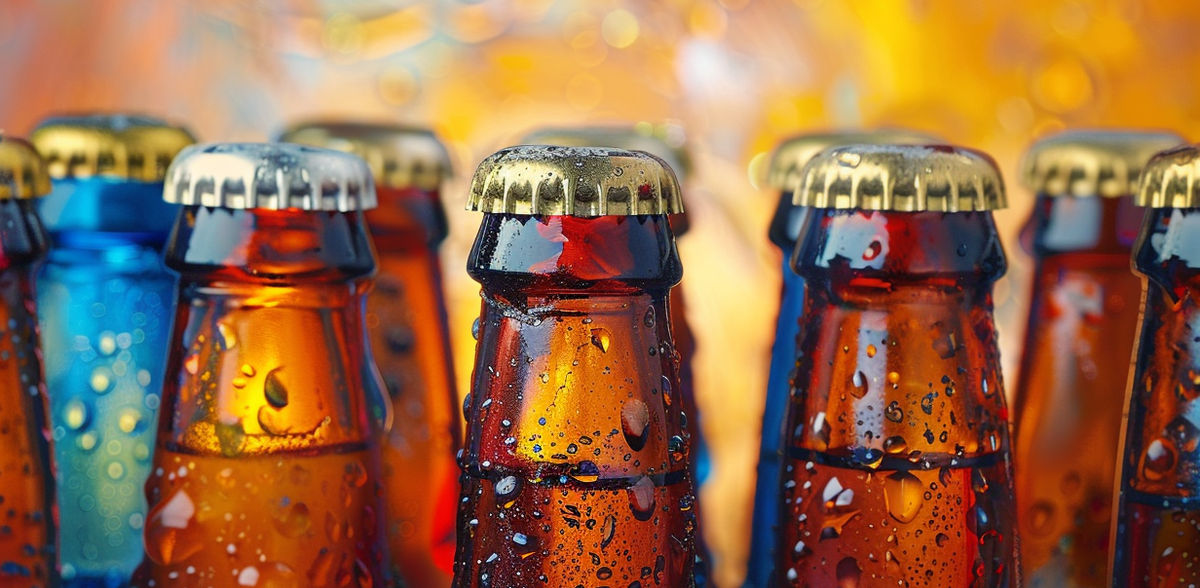New gel breaks down alcohol in the body
Advertisement
ETH researchers have developed a gel made from whey protein fibers that converts alcohol in the stomach into harmless acetic acid with the help of individual iron atoms before it enters the bloodstream. They showed in mice that the gel reduces blood alcohol levels by up to fifty percent and protects the body from damage to health. However, further tests are still required before it can be used on humans. However, the researchers are confident that this will be successful and have already applied for a patent for the gel.
The majority of alcohol enters the bloodstream via the gastric mucosa and the intestines. The consequences of this are undisputed today: Even small amounts of alcohol impair the ability to concentrate and react and increase the risk of accidents. Those who regularly drink large quantities are damaging their health: liver disease, inflammation of the gastrointestinal tract and cancer are common consequences. According to the World Health Organization, around 3 million people die every year from excessive alcohol consumption.
ETH researchers have now developed a protein gel that breaks down alcohol in the gastrointestinal tract. In a study recently published in the journal "Nature Nanotechnology", they show in mice that the gel converts alcohol quickly, efficiently and directly into harmless acetic acid before it enters the bloodstream, where it unfolds its intoxicating and harmful effects.
Reducing health damage caused by alcohol
"The gel shifts the breakdown of alcohol from the liver to the digestive tract. In contrast to alcohol metabolism in the liver, however, this does not produce the harmful intermediate product acetaldehyde," explains Raffaele Mezzenga, Professor of Food and Soft Materials at ETH Zurich. Acetaldehyde is toxic and is responsible for many health problems caused by excessive alcohol consumption.
In future, the gel could therefore be taken orally before or during alcohol consumption in order to prevent the blood alcohol level from rising and acetaldehyde from damaging the body. In contrast to many products available on the market, the gel not only combats the symptoms of harmful alcohol consumption, but also its causes. However, the gel is only effective as long as there is still alcohol in the gastrointestinal tract and can therefore no longer help with alcohol poisoning if the alcohol is already in the blood. It also does not help to reduce alcohol consumption in general. "It is healthier not to drink alcohol at all. However, the gel could be particularly interesting for people who don't want to give up alcohol completely, but don't want to put a strain on their body and aren't interested in the effects of alcohol," says Mezzenga.
Main ingredients: Whey, iron and gold
The researchers used ordinary whey proteins to produce the gel. These were boiled for several hours to form long, thin fibers. If salt and water are then added as a solvent, the fibers cross-link to form a gel. The advantage of a gel over other forms of administration is that it is digested very slowly. However, in order for the gel to break down the alcohol, several catalysts are required.
The researchers used individual iron atoms as the main catalyst, which they distributed evenly over the surface of the long protein fibers. "We virtually immersed the fibers in an iron bath so that they could react effectively with the alcohol and convert it into acetic acid," says ETH researcher Jiaqi Su, the first author of the study. Tiny amounts of hydrogen peroxide are needed to trigger this reaction in the stomach. These are generated by an upstream reaction between glucose and gold nanoparticles. The researchers chose gold as a catalyst for hydrogen peroxide because the precious metal is not digested and is therefore effective for longer in the digestive tract. The researchers packed all these substances - iron, glucose and gold - into the gel. This enabled a multi-stage cascade of enzymatic reactions in which alcohol is converted into acetic acid at the end.
The gel works in mice
The researchers tested the effectiveness of the new gel on mice that were given alcohol once and on mice that were given alcohol regularly for ten days. Thirty minutes after the single dose of alcohol, the prophylactic application of the gel reduced the alcohol level of the mice by forty percent. Five hours after alcohol intake, their blood alcohol level had even dropped by 56 percent compared to the control group. The harmful acetaldehyde accumulated less in these mice and the stress reactions of the liver were significantly reduced, which was reflected in better blood values.
In the mice that were given alcohol for 10 days, the researchers were able to demonstrate not only a lower alcohol level but also a lasting therapeutic effect of the gel: The mice that were given the gel daily in addition to alcohol showed significantly less weight loss, less liver damage and therefore better fat metabolism in the liver as well as better blood values. Other organs such as the spleen or intestines as well as the tissue of the mice also showed significantly less damage caused by alcohol.
Patent pending
The fact that iron reacted with alcohol to form acetic acid was already discovered by the researchers in an earlier study on the administration of iron through whey protein fibers. As this process was too slow and too weak at the time, they changed the form in which they attached the iron to the protein fibers. "Instead of larger nanoparticles, we opted for individual iron atoms, which can be distributed more evenly on the surface of the fibers and therefore react more effectively and quickly with the alcohol," explains ETH Professor Mezzenga.
The researchers have already applied for a patent for the gel. However, several clinical tests are still required before it can be approved for use in humans. However, as the researchers have already proven that whey protein fibers from which the gel is made are edible, they are confident that this step will also be successful.
Note: This article has been translated using a computer system without human intervention. LUMITOS offers these automatic translations to present a wider range of current news. Since this article has been translated with automatic translation, it is possible that it contains errors in vocabulary, syntax or grammar. The original article in German can be found here.































































